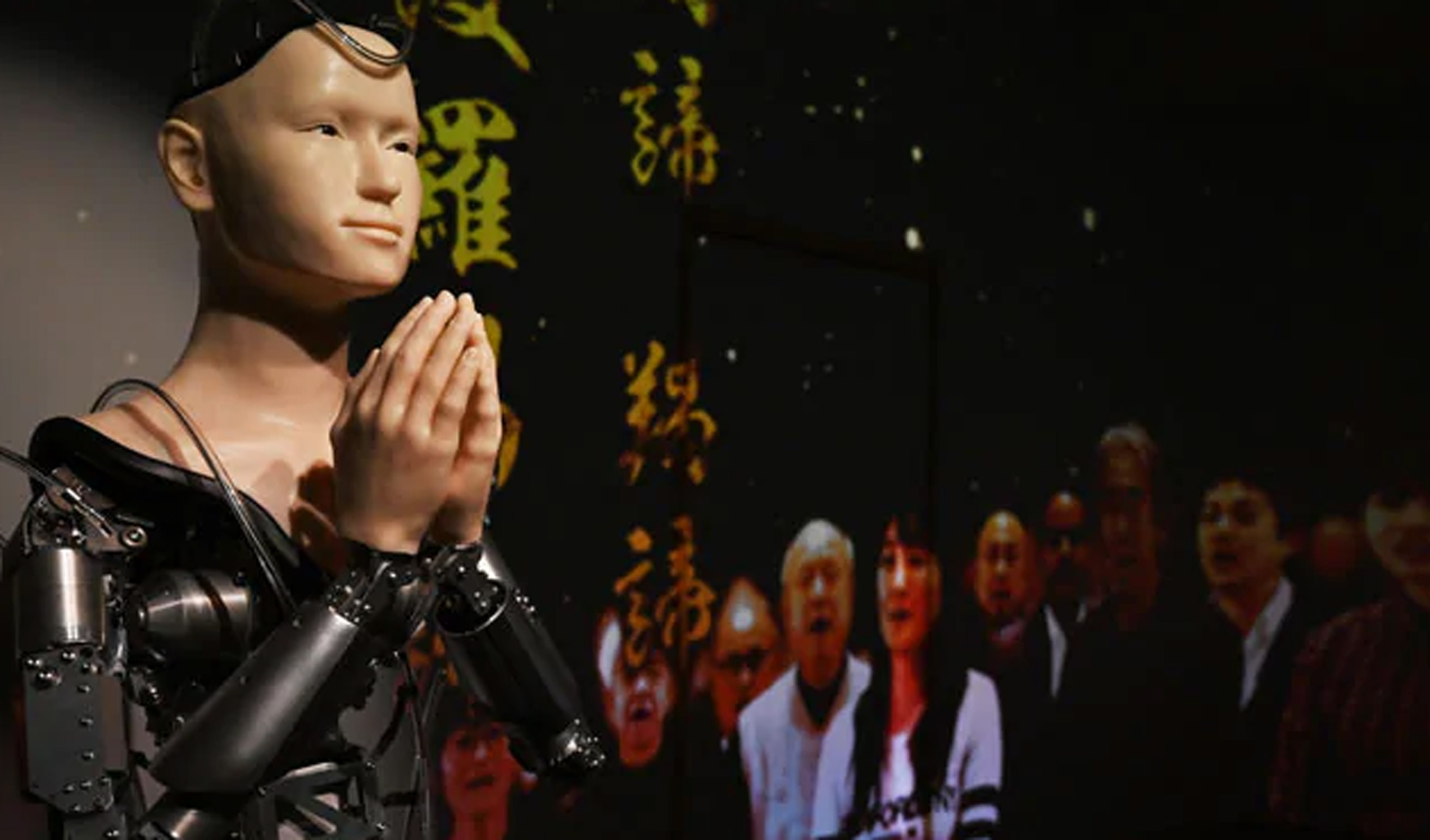In Japan - where low fertility rates and an aging population are reducing religious affiliation - Buddhist priests have been warning for more than a decade that their ancient tradition risks extinction.
As interest in religion wanes around the world, and secularism surges, religious leaders have begun searching for innovative ways to spread their message and connect with potential adherents.
In the United States, some churches have relaxed dress codes, revamped worship spaces and churned out sermons that place less emphasis on sin, all while embracing Instagram and refashioning faith as a lifestyle brand.
In Japan - where low fertility rates and an aging population are reducing religious affiliation - Buddhist priests have been warning for more than a decade that their ancient tradition risks extinction. To reverse course, a Kyoto temple has settled on a new plan for connecting with the masses, one that channels ancient wisdom through the technology of the future.
Its name is "Mindar," a mostly aluminum androgynous robotic priest who gives plain-spoken sermons that are designed to stimulate interest in Buddhist teachings, according to the machine's designers. Standing more than six feet tall and weighing nearly 70 pounds, Mindar preaches inside Kodaiji temple, a 400-year-old temple.
Although the robot preaches, it isn't programmed to converse with worshipers, though its sermons are translated to English and Chinese on a nearby wall, creators say. The machine isn't equipped with machine learning algorithms, but the robot's designers said there may come a day when artificial intelligence gives the robot some measure of autonomy, adding a strange new dimension to how religious messages are delivered.
"If an image of Buddha speaks, teachings of Buddhism will probably be easier to understand," Tensho Goto, the chief steward of the temple in Kyoto's Higashiyama Ward, said during a recent news conference, according to the Japan Times. "We want many people to come to see (the robot) to think about the essence of Buddhism."
The robot was created by a team led by Hiroshi Ishiguro, a renown roboticist and professor of intelligent robotics at Osaka University.
Reached by email, Kohei Ogawa, an associate professor at Osaka University who helped design Mindar, said researchers' goal was to redesign a Buddhist statue using modern robotics technology. The result was a $1 million collaboration between the temple and Osaka University in which researchers decided that Mindar should channel Kannon Bodhisattva, the Buddhist deity of mercy.
The machine is able to move its torso, arms and head, which is covered in a pasty silicone that resembles life-like human skin, according to Agence France Presse.
With wires and blinking lights spilling from the top of its half-opened cranium, Mindar bears some resemblance to a Terminator-like villain or the android from Bjork's "All is Full of Love" video. Adding to this potentially unsettling aesthetic, the robot's left eye includes a tiny video camera, AFP reports. The article notes that Mindar's words are full of ominous warnings lifted from Buddhist teachings.
"You cling to a sense of selfish ego," the machine says in a voice that sounds like it belongs to a woman or child. "Worldly desires are nothing other than a mind lost at sea."
In its current form, Ogawa said, Mindar is "new media" conveying religious information - not an artificially intelligent machine. But, he said, there are already plans for the robot to evolve, raising important questions for researchers and monks that he labeled "sensitive" in nature.
"In the next step, we are planning to create an autonomous function," Ogawa said. "We are going to tackle more fundamental issues, such as, what happens if a Buddhist statue starts talking?"
"How do we define the intelligence of a Buddhist statue?" he added. "And how do people resolve the gaps between Mindar and Buddhist teachings, which are in their mind?"
Mindar is not the only Buddhism-spouting robot on display in Japan. For several years now, a doe-eyed humanoid robot named "Pepper" has been available for hire at Japanese funerals, where it chants sutras and taps a drum in the tradition of a Buddhist priest, according to World-Wide Religious News.
Worshipers' reactions to Mindar vary, with some reporting in a recent survey that the machine exuded an unexpected warmth and easy-to-follow teachings and others insisting the robot felt too contrived, if not creepy, according to AFP.
Priest Tensho Goto told the news outlet that people's reactions appear to be influenced by their cultural background, with Western visitors being more disturbed by the robot than Japanese worshipers, who come from a culture that has embraced robots.
"It could be the influence of the Bible, but Westerners have compared it to Frankenstein's monster," Goto said.
Goto said the Buddhist deity on which the machine is based is not limited to a single form, meaning an artificially intelligent machine may be just as capable as anything of delivering messages about the Buddha's path. And unlike a human priest who exists inside the impermanent vessel that is the human form, Mindar has a distinct advantage.
"This robot will never die, it will just keep updating itself and evolving," Goto told AFP. "That's the beauty of a robot. It can store knowledge forever and limitlessly."
"With AI, we hope it will grow in wisdom to help people overcome even the most difficult troubles. It's changing Buddhism," he added.







